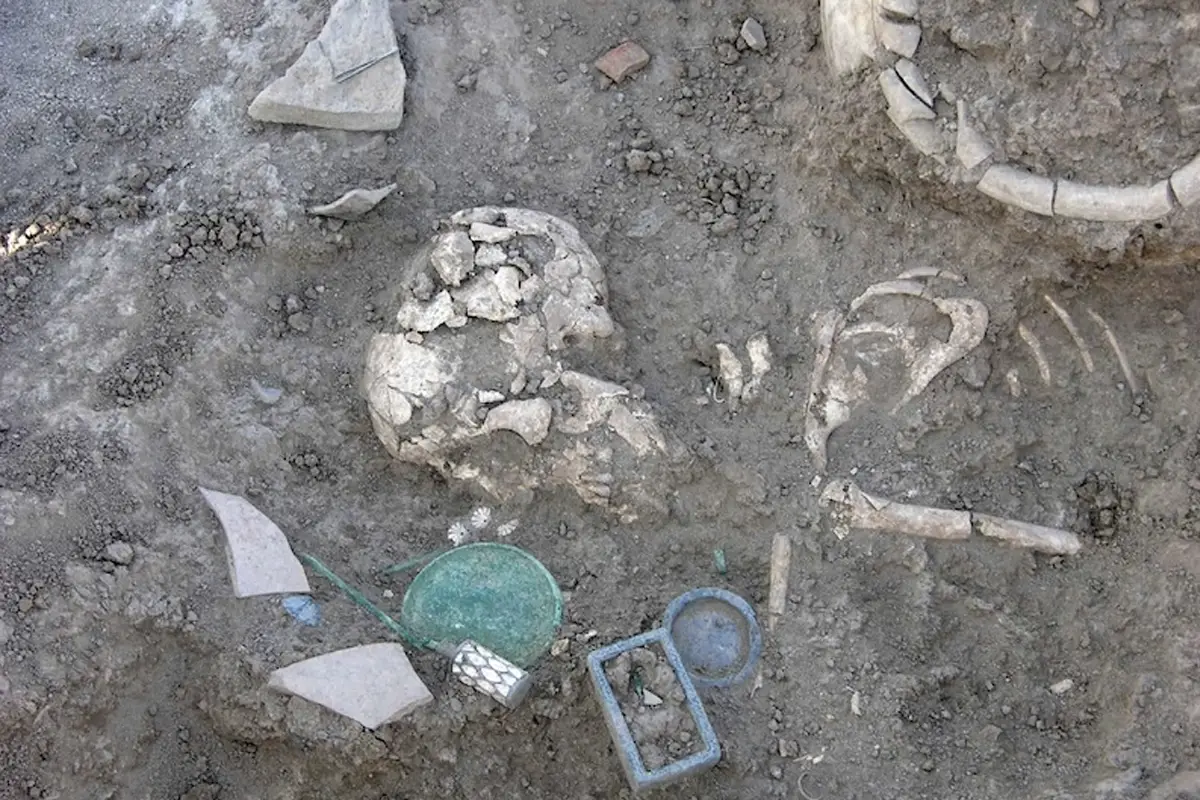A team of archaeologists excavating in the Tepe Chalow area of northeastern Iran have discovered a Bronze Age tomb containing 34 ornately crafted grave goods.
According to a study published in the Journal of the British Institute of Persian Studies, the tomb is the burial site of a young woman, who was found with items made from gold, ivory, lapis lazuli, chlorite, and bronze.
Among the most notable were decorated cosmetic vessels, a bronze pin shaped like a hand holding a rosette, and a seal featuring symbolic motifs, indicating her possible role in trade or administrative functions.
“The burial followed what we have observed to be typical of the Chalow funerary rite: the body was placed in a crouched position on its right side, with the hands near the face, and facing towards the south-east with pottery vessels arranged behind the back of the skeleton, above the head, and below the feet,” said the study authors.
The tomb, designated Grave No. 12, highlights the wide geographic spread of the Greater Khorasan Civilization (GKC), which emerged in the late third millennium BC and extended into Turkmenistan, northern Afghanistan, and northeastern Iran. Artefacts from Chalow suggest strong trade connections with distant civilizations across Mesopotamia, the Persian Gulf, and even the Indus Valley.
As excavation and analysis continue, Tomb 12 is provided new insights into both Tepe Chalow and the broader cultural legacy of the GKC.
Header Image Credit : Vahdati, AA, Biscione, R., Dan, R., & Trémouille, MC
Sources : https://doi.org/10.1080/05786967.2025.2488251







